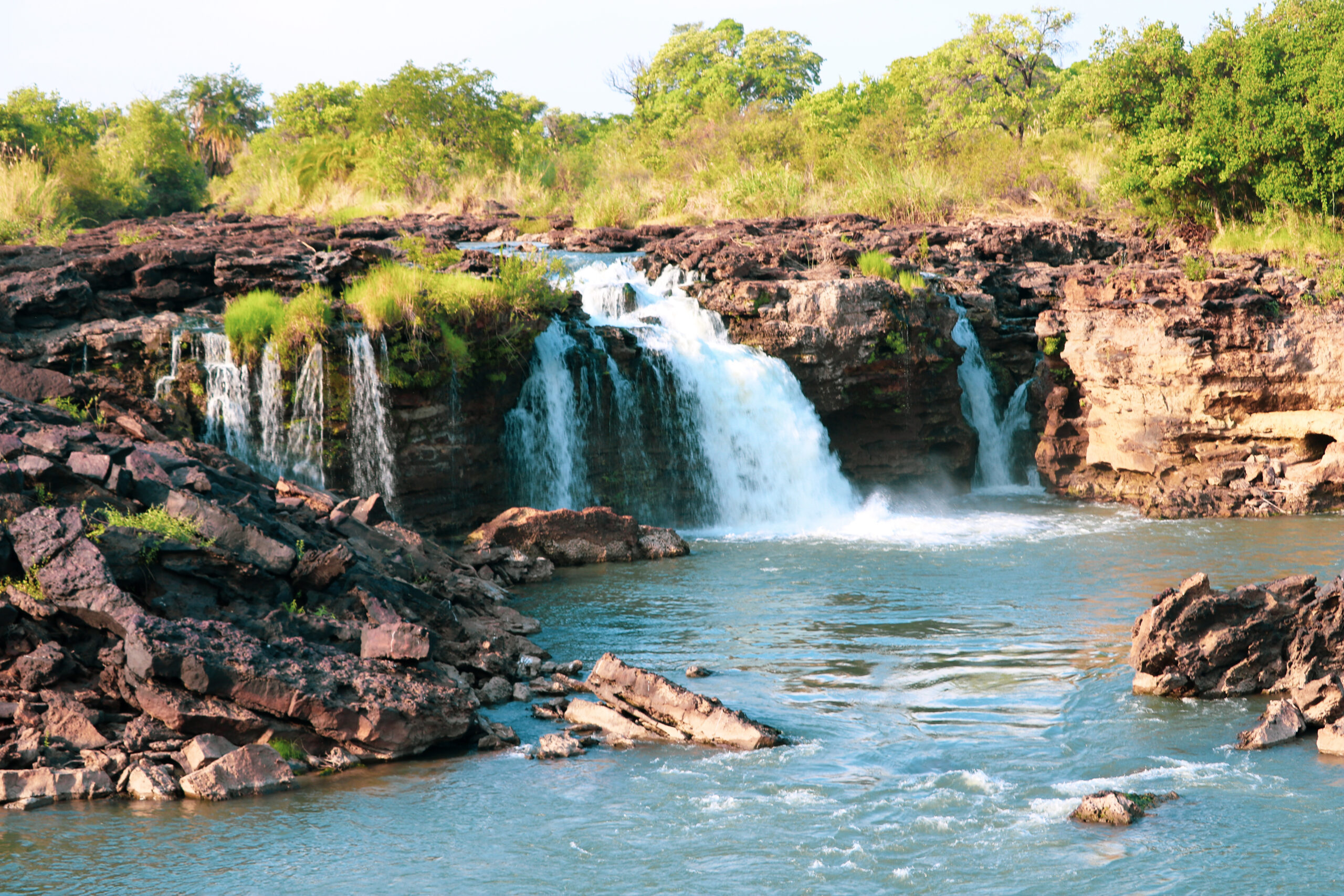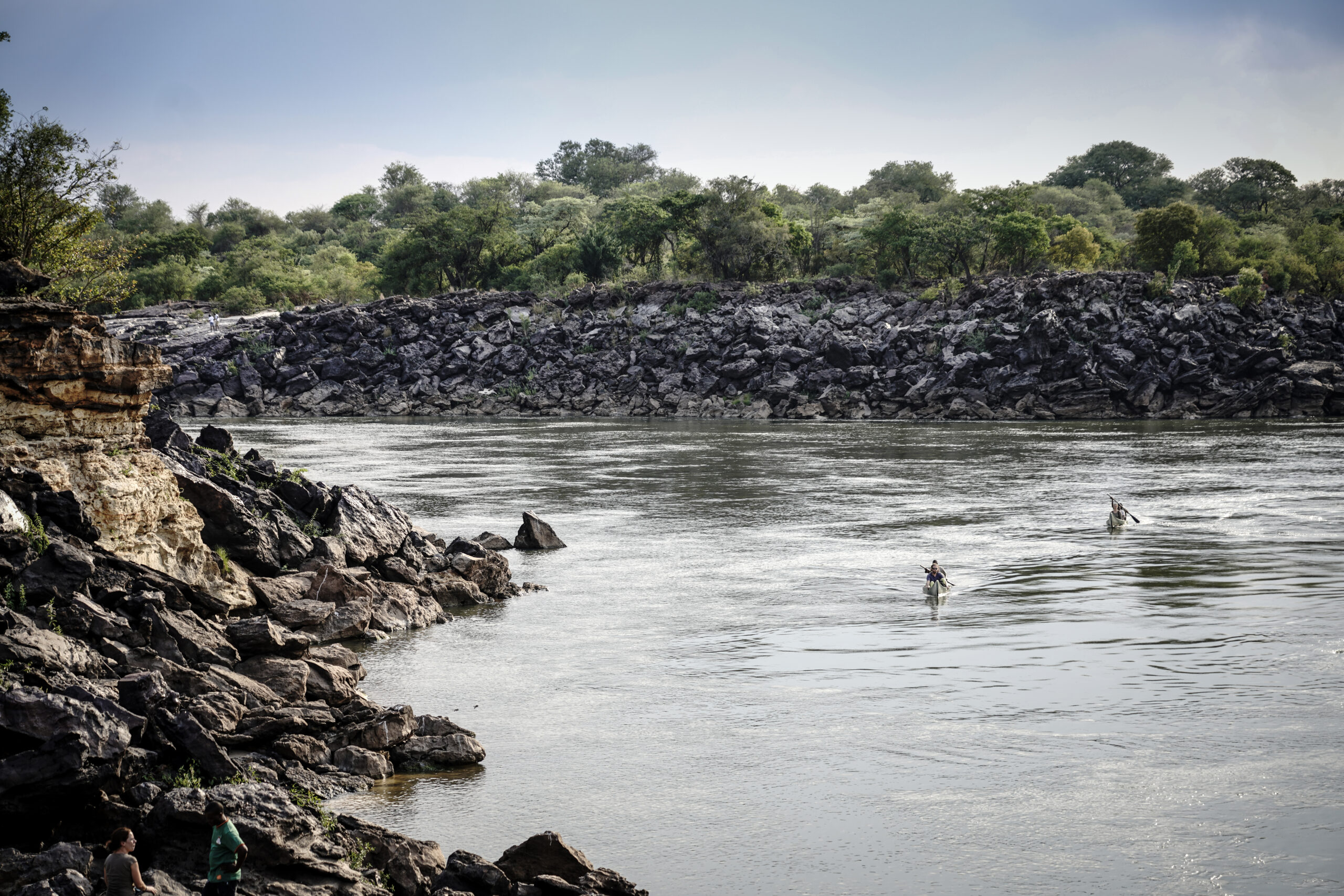Empowering Southern African Communities Through Regional Conservation

The Challenge
Southern Africa’s rich biodiversity and vital water resources are under growing pressure from climate change, population growth, land degradation, and wildlife trafficking crime. Communities across the Limpopo, Olifants, Okavango, and Cubango River basins face mounting threats: water insecurity, loss of ecosystem services, and limited capacity to adapt to environmental shocks. South Africa’s reliance on coal and aging infrastructure has led to frequent load-shedding and energy insecurity. In addition, South Africa’s agricultural sector is bifurcated between commercial agribusiness and subsistence farming. The sector has faced production volatility, limited market access for smallholders, and regulatory instability.Our Solution
A Multi-Sectoral Approach Addresses the Root Causes of Environmental Degradation
To address these complex, transboundary challenges, Chemonics applied a systems-based, multi-sectoral approach. Partnering with transboundary water authorities, we focused on addressing the root causes of environmental degradation by strengthening governance, improving access to water and sanitation, protecting biodiversity, and building resilient livelihoods. Across seven countries, we supported millions of people and hundreds of stakeholders to conserve ecosystems while empowering communities to thrive. Sustainability was achieved through inclusive planning, capacity building, and locally-owned solutions that empowered institutions and communities to manage natural resources.
- Strengthening Water Security and Ecosystem Governance. Chemonics supported basin-wide coordination to facilitate transboundary governance. Technical assistance and stakeholder consultations harmonized water management policies across seven countries and develop basin-level planning instruments. Programs promoted basin-level planning and through participatory catchment planning, institutional capacity building, and hydrological modeling tools.
- Combating Wildlife Crime Through Regional Cooperation. By leveraging technologies like the #WildEye Southern Africa tool, we were able to effectively monitor arrests, affected species, court outcomes, and other wildlife crime indicators. This data then informed the region’s first monitoring and evaluation network dedicated to wildlife crime. We also invested in judiciary training and forensic capacity to strengthen legal responses. This facilitated collabroration among more than 15 organizations operating across five transboundary conservation areas and six countries.
- Promoting Resilient Livelihoods and Climate-Smart Practices Chemonics built community resilience by supporting inclusive, locally led adaptation planning. Through vulnerability assessments and scenario planning, teams helped identify climate risks and co-develop tailored strategies. Training introduced climate-smart agriculture, eco-tourism, and resource management practices, with a focus on engaging women, youth, and marginalized groups in decision-making and implementation.
- Mobilizing Private Sector Partnerships and Sustainable Financing. In collaboration with Genesis Analytics, Chemonics helped launch the Cubango-Okavango River Basin Fund (CORB Fund), a blended finance mechanism aligning economic development with ecological stewardship across Angola, Botswana, and Namibia. Structured with a transparent governance framework, the fund both donor contributions and direct revenue from ecosystem services, tourism, and sustainable investments.
- Leveraging Technology and Innovation for Conservation Technology and data tools – including as mobile apps, geospatial platforms like ArcGIS and ENVI-met, and climate modeling tools like OpenFOAM and COMSOL – enhanced forest patrolling, wildlife monitoring, and water resource mapping. These innovations improved decision-making and institutional responsiveness by providing real-time insights and localized environmental simulations.
- Facilitating Knowledge Sharing and Institutional Capacity Building Chemonics fostered regional learning networks through training programs, technical assistance, and participatory planning workshops. Tools including causal loop diagrams, outcome mapping, and participatory scenario planning embedded adaptive management and resilience-based planning. These approaches focused on behavioral change, future uncertainty, and self-guided learning, strengthening institutional capacity for biodiversity and water governance.


The Impact
Aligning Ecological Integrity with Human Development
Chemonics delivered lasting results by integrating sustainability into every level of intervention – from policy reform to community engagement – to advance transboundary governance, strengthen community resilience, and protect biodiversity.
- Water Security: Over 250,000 people gained access to safe drinking water and sanitation through upgraded infrastructure and community-led water and sanitation initiatives. New water systems, latrines, and hygiene education reduced disease and improved health. Inclusive approaches prioritized women, children, and isolated groups, resulting in healthier communities, better school attendance, and increased resilience to climate-related water challenges.
- Resilient Livelihoods: More than 100 communities adopted climate-smart agriculture, eco-tourism, and natural resource management practices. Inclusive planning empowered marginalized groups to reduce vulnerability to droughts, erratic rainfall, land degradation, and biodiversity loss—climate stressors that threaten food security and livelihoods. These efforts improved productivity, diversified incomes, and strengthened local ownership of resilience strategies across the region.
- Conservation Capacity: Online learning platforms, training programs, and multimedia resources equipped hundreds of youth and conservationists with tools for wildlife monitoring and protection. Through SMART software, camera trap guides, and digital storytelling, community members gained species tracking, habitat assessment, and data collection skills to foster informed decision-making.
- Reduced Wildlife Crime: The coordinated regional effort now spans nearly 200,000 km², enhancing cross-border intelligence sharing and enforcement. The #WildEye tool has become a central resource for tracking wildlife crime trends, while improved prosecution rates reflect stronger judicial systems and forensic capabilities.
- Regional Policy Alignment: Improved regional cooperation on conservation, including efforts to address threats like wildlife trafficking, resulting in more effective resource management. This improved the ability of countries to collaborate on natural resource management, enforcement mechanisms, collaboration, and other long-term sustainability goals.